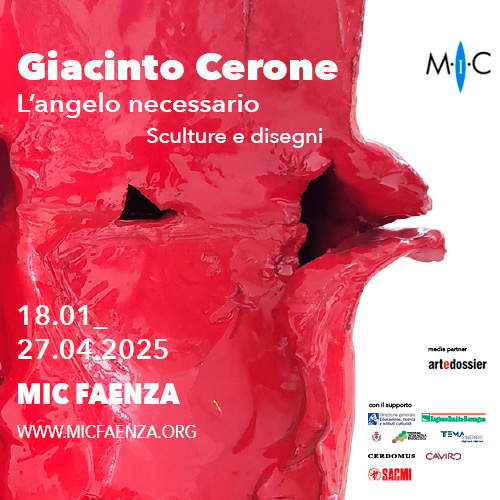Florence, construction site for future St. Ursula Museum reopens for a month
From Saturday, Sept. 2 to Sunday, Oct. 1, 2023, the construction site of theformer Florentine monastery for the future Museo Sant’Orsola will once again be open to the public with site-specific artworks and a program of cultural initiatives with free admission. A new extraordinary opening, then, of the complex, which is at the center of a major regeneration plan curated by the French Artea/Storia group, and which will end in 2025 with the inauguration of a museum, managed by a nonprofit foundation (in the process of being created), ateliers for artists, high craft workshops, spaces dedicated to training and co-working, a guesthouse, a literary café, and a restaurant.
For the first time, the secured spaces were opened to the public last June to host the exhibition Beyond the Walls of St. Ursula, featuring works by contemporary artists Sophia Kisielewska-Dunbar and Alberto Ruce. Reached more than six thousand visitors and over fifty guided tours in one month. “Visitors understood our goal: to preserve the past while looking to the future,” commented curator Morgane Lucquet Laforgue, head of the future museum. The exhibition will be open again, in a revised and enriched form compared to the exhibition route created in June.
If for her triptych oil-on-canvas painting Sophia Kisielewska-Dunbar relied on the altarpieces that anciently stood in and around the convent to imagine a female counter-narrative, Alberto Ruce instead involved the women of the neighborhood as models for murals and works on canvas inspired by the final part of Lisa Gherardini’s life. The ephemeral essence of the project led the artist to experiment with working with wax, a changeable and metamorphic material, as well as the spaces of Sant’Orsola being restored.
Sant’Orsola is a place deeply rooted in the history of Florence, which remained inaccessible for four decades after undergoing transformations and changes of use: the monastery remained in use until 1810, when it was expropriated by Napoleon’s troops. Then began the dispersion of St. Ursula’s historical and artistic heritage. Converted into a tobacco factory from 1818 to 1940, then into a shelter for displaced persons after World War II, it was finally assigned in the 1980s to the Guardia di Finanza to turn it into barracks, but the project it began was soon abandoned. Since then, the complex, covered with reinforced concrete, has remained enclosed in a cage of scaffolding and only exceptionally opened during some extraordinary cultural events. In 2020, a redevelopment project proposed by the French company Artea was approved by the Metropolitan City of Florence, which will once again transform the complex to make it a place of culture and meetings, a multipurpose space permeable to the city and open to the neighborhood, residents and temporary citizens.
The St. Ursula Museum will pursue the goal of reintegrating and enhancing the convent’s ancient collection, bringing some of the historic works back home, while at the same time supporting contemporary artists through residencies, temporary exhibitions and the launch of a new collection that looks to new forms of art.
“In keeping with its traditions, Artea, with its History branch, will work to restore the St. Ursula complex. It has designed a unique project that proposes a plurality of services and activities, knowing how to enhance the specificities of the place and its past while inscribing it in modernity, thus marking a new stage in its history. This vision will enable us to offer students, artisans and artists tomorrow an inspiring place conducive to experimentation and learning. The redevelopment work that will soon begin will allow Sant’Orsola to participate in the life of the San Lorenzo neighborhood, in the heart of Florence, and to offer Florentines, as well as all visitors, a place of life and singular experiences,” concludes Philippe Baudry, CEO of Artea.
For info: museosantorsola.it
Free admission.
 |
| Florence, construction site for future St. Ursula Museum reopens for a month |
Warning: the translation into English of the original Italian article was created using automatic tools. We undertake to review all articles, but we do not guarantee the total absence of inaccuracies in the translation due to the program. You can find the original by clicking on the ITA button. If you find any mistake,please contact us.





























